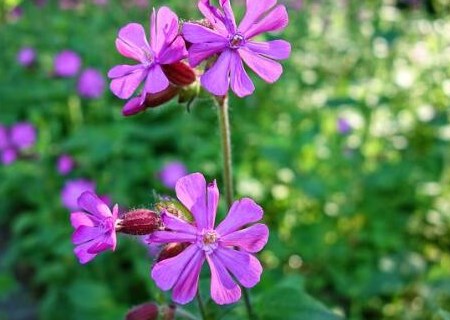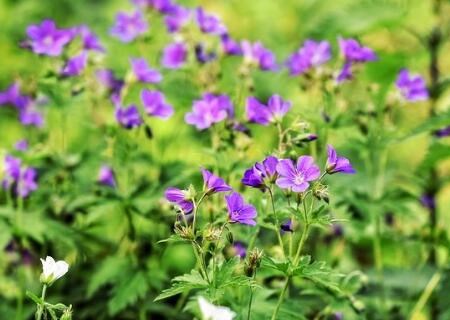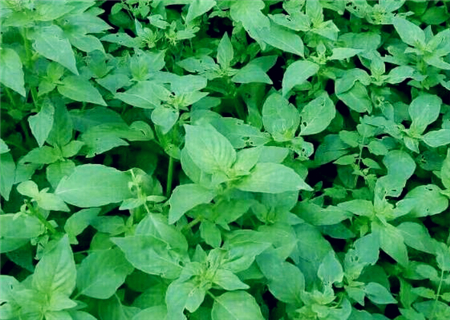How to cultivate perennial herbaceous mosquito repellent grass in water? What kinds do you have? How to control diseases and insect pests?
Mosquito repellent plant has volatile aroma, can be used to make essential oil, people like to plant it, planting can choose cutting, hydroponic two ways, so do you know how to hydroponically cultivate mosquito repellent? What kinds do you have? How to control diseases and insect pests?

First, how to hydroponically cultivate mosquito repellent grass
1. Choose strong branches for pruning. Choose oblique cut, which can enlarge the water area of the incision. Then cut off the lower part of the leaves and leave the upper leaves.
2. Drill a small hole with the same thickness in the foam, and then insert the branches of mosquito repellent grass. Inject a certain amount of water into the hydroponic container, and then put the mosquito repellent branches into the hydroponic container. Foam board can not only fix the plant, but also reduce water evaporation. In addition, it should be noted that the length of the branches of mosquito repellent should not be too long. It is recommended to sterilize the aquaculture bottle before use.
3. Water should be changed every four or five days, and attention should be paid to the cleaning and disinfection of hydroponic containers when changing water. in addition, in order to ensure the health of hydroponic branches, the rotting or secreted substances, branches and leaf tissues should be cleaned up in time. You can spray a little water on the leaves of the note from time to time. Hydroponic water is recommended to use pure water, or you can put a little nutrient solution into it.
4, daily care is in place, generally 15-30 days or so, you can see mosquito repellent grass taking root. If you see the healthy growth of the roots, you can transplant in time. It is not recommended to put them in the sun in the first week after potting. When the plant grows new leaves, you can make sure that the mosquito repellent grows healthily, and then you can put it outside to receive the sun.
2. What are the species of mosquito repellent
1. Mosquito repellent grass
Mosquito repellent grass has the smell of lemon, raised in the house, mosquitoes will escape quietly like plague. Especially the hot summer can be refreshing and refreshing. It has been tested by authority that it is effective in repelling mosquitoes and is harmless to human beings and animals. Mosquito repellent is a perennial herb; it can be cultivated indoors and outdoors. In general, the higher the temperature, the stronger the fragrance, the better the mosquito repellent effect.
2. Cordyceps sinensis
A herb of the family Compositae, which can grow to a meter tall with small yellow flowers, a plant with hundreds of flower heads, and the outer bracts of each flower head have mucus, just like five outstretched little fingers. As long as a small mosquito falls on it, it is stuck. After that, the insect carcass is slowly digested as its growth nutrition, and if there is dust sticking to the top for a few days, it is also digested without a trace. Potted plants are placed at home to catch mosquitoes and vacuum.
3. Chasing flies and plums
The sensitive smell of mosquitoes and flies is volatilized from its branches, leaves and flowers, which has a strong effect of expelling mosquitoes and flies without any harm to the human body. It not only has a good effect on repelling mosquitoes and flies, but also has beautiful colors, such as red, yellow and white. The flowers are often yellow or pink at first, then gradually become orange or orange, and finally red, so they are known as "mosquito repellent seven flowers". Put it by the window, pleasing to the eye.
4. Evening incense
Mosquitoes are afraid of the strong smell of nocturnal incense, so putting fragrant flowers indoors can naturally get the effect of repelling mosquitoes. Most of these flowers are elegant and beautiful, easy to breed, and the price is not expensive. in addition, they are green and white when they bloom in summer. However, according to relevant experts, the aroma of flowers such as nocturnal incense is often refreshing at first, but it may have an uncomfortable reaction because it is too strong for a long time, so it is recommended to move the potted flowers outdoors during the day. ...
Third, how to control diseases and insect pests with mosquito repellent
1. Disease control
(1) symptoms of falling leaves
First, because of management problems, improper management will cause plant roots to rot, leaves become wrinkled and atrophied, which is due to high air humidity and poor ventilation. At this time, need to spray some fungicides, control the amount of fungicides. If the leaves fall and turn yellow in a short period of time, it may be caused by temperature imbalance and insufficient light, so get enough light on time.
(2) dysplasia
When planting, if you use alkaline soil culture, it will cause the plant to be short and the growth will stop. Sometimes it can be caused by the use of alkali in the water used for irrigation. This situation can loosen the soil on time, remove the topmost soil, re-add some new soil, and then add a small amount of dilution to improve soil properties.
(3) viral disease
Virus is a substance invisible to the naked eye. It can be parasitized in living cells and tissues of plants, and then transferred to all parts of the plant together with organic matter. In this case, we need to remove the diseased plants in time and select healthy plants for cultivation.
2. Pest control
Grubs, commonly known as beetles, show a white flesh. It can feed on the root of the plant and gradually invade the plant. The way to control this pest is to remove the insects you see when turning the basin, and then sterilize the roots with insecticides.
Time: 2019-03-17 Click:
- Prev

What are the seed planting methods of mosquito repellent grass (also known as geranium)? Is it suitable for the bedroom? What's the use?
Mosquito repellent, like warm, moist and sunny environment, poor cold resistance. Pelargonium geranium is very popular because of its volatile aroma and has a wide range of uses. People like to plant it. So do you know the planting methods of mosquito repellent seeds? Is it suitable for the bedroom? What's the use?
- Next

When is the best time to plant the commonly used herb "Schizonepeta tenuifolia"? In what month can I plant it? What's the difference from basil? (balcony attached
Schizonepeta tenuifolia is one of the commonly used herbs in China, alias: Cardamine, Cardamine, Artemisia annua, Artemisia annua, is a Labiatae, Schizonepeta perennial. So when is the best time to plant Schizonepeta tenuifolia? In what month can I plant it? What's the difference between basil and basil? The best planting time for Schizonepeta tenuifolia seeds is from September to November every year.
Related
- Fuxing push coffee new agricultural production and marketing class: lack of small-scale processing plants
- Jujube rice field leisure farm deep ploughing Yilan for five years to create a space for organic food and play
- Nongyu Farm-A trial of organic papaya for brave women with advanced technology
- Four points for attention in the prevention and control of diseases and insect pests of edible fungi
- How to add nutrient solution to Edible Fungi
- Is there any good way to control edible fungus mites?
- Open Inoculation Technology of Edible Fungi
- Is there any clever way to use fertilizer for edible fungus in winter?
- What agents are used to kill the pathogens of edible fungi in the mushroom shed?
- Rapid drying of Edible Fungi

